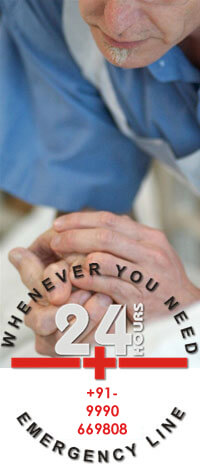Tick Removal - First AId Training
Ticks are common across the world. In the India ticks are most active from March to May and from August to November; this is what we would usually call tick season. Ticks can be active whole year as long as the temperature is above freezing. Most tick bites are harmless but some tick bites can transmit disease. The best action is to try to prevent being bitten by a tick, but if you are bitten use the following recommendations for correct Tick Removal.
Tick removal is an important first aid skill, especially for those who live or spend time in areas where ticks are prevalent. Here are the steps for safe tick removal:
First, take those steps which are necessary to avoid Tick Removal by taking precautions when going in the woods or grassy areas. Stick to the center of the trail, going cross country through tall grass of thick jungle will increase your chance of contact with ticks. Wear full sleeve shirts and Full pants, ticks can’t bite if they can't contact your skin, tuck in your shirts and pant legs into socks. We usually try to avoid mosquito, use insect repellent rated for both ticks and mosquitoes. When returning from jungle do a “tick check,” check your clothes and body for any ticks. Wash your body and clothing asap. As for pets, make sure to check your dogs and cats for ticks regularly and talk with your vet about the best actions to prevent their exposure.
If you have been bitten by a tick for these Tick Removal steps. Use fine-tipped tweezers to grasp the tick as close to the skin's surface as possible. Do not use your fingers to attempt to remove the tick. We want to avoid smashing or otherwise disfiguring the tick, we want to remove it completely from our body. Using the tweezers grasp the tick as close to the body as possible. Pull upward with steady, even pressure. Don't twist or jerk the tick; this can cause the mouthparts to break off and remain in the skin. If this happens, try to remove the remaining mouthparts with the tweezers. If you are unable to remove the mouthparts, leave them alone and let the skin heal. Within a few seconds the tick will likely detach from the body. If it does not detach, continue to pull with steady pressure to remove the tick. If you twist or jerk the tick it may cause mouth parts to break off and remain in your skin. If this happens use the tweezers to try and remove the remaining parts of the tick.
After removing the tick, clean the bite area and your hands with rubbing alcohol or soap and water.
Dispose of the tick by placing it in a sealed container or bag, wrapping it tightly in tape, or flushing it down the toilet.
Watch for symptoms of tick-borne illnesses, such as fever, rash, or flu-like symptoms, for several weeks after the bite. If you experience any of these symptoms, seek medical attention immediately. If you develop a rash or fever withing a few days to a few weeks of exposure see your doctor immediately. Find a list of common tick species and their geographic locations in the US from the CDC here.
Remember to always wear protective clothing when in tick-infested areas, such as long-sleeved shirts and pants, and use insect repellent containing DEET or permethrin. Check yourself and your pets for ticks after spending time outdoors.
Learn more about Tick Removal, and other First Aid for insect and animal bites, in a 24x7 Medical Service First Aid and CPR course at Life Saving CPR Training in New Delhi. Sign up for a class online at Delhi First Aid and CPR Training Institute.


































